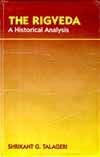|
 Page 1
Page 1
In our earlier book, we had taken up the subject of the Aryan invasion theory in all its aspects, and conclusively established that India was the original homeland of the Indo-European family of languages.
However, this second book has become imperative for various reasons:
1. The literary evidence for our conclusion in our earlier book was based primarily on Puranic sources. According to many critics, the PurANas, whose extant versions are very much posterior to the extant Rigveda, are not valid sources for evidence pertaining to the Vedic period: the Rigveda is the only valid source for the period.
The above criticism is not wholly invalid. The Rigveda is certainly the source of last resort: i.e. information in other texts (like the PurANas, or even the other Vedic texts) can be rejected if it distinctly contradicts information in the Rigveda. As we shall see, some of the data (such as the names, relations, and even the chronological order within the dynasty, of kings or groups of kings) assumed by us in our earlier book on the basis of the PurANas, or on the basis of second-hand information (culled, for example, from P.L. Bhargava�s book) undergoes a thorough revision in this book when we examine in detail the actual data within the Rigveda. The vast canvas covered by the PurANas is of course to be replaced by the smaller one covered by the Rigveda.
But, far from contradicting or disproving the theory put forward by us in our earlier book, this detailed analysis of the Rigveda emphatically confirms our theory.
In fact, while confirming our theory that India was the original homeland of the Indo-European family of languages, our analysis takes us even further ahead in respect of two basic points: the habitat of the Vedic Aryans, and their historical identity.
Author : Shrikant G. Talageri
|